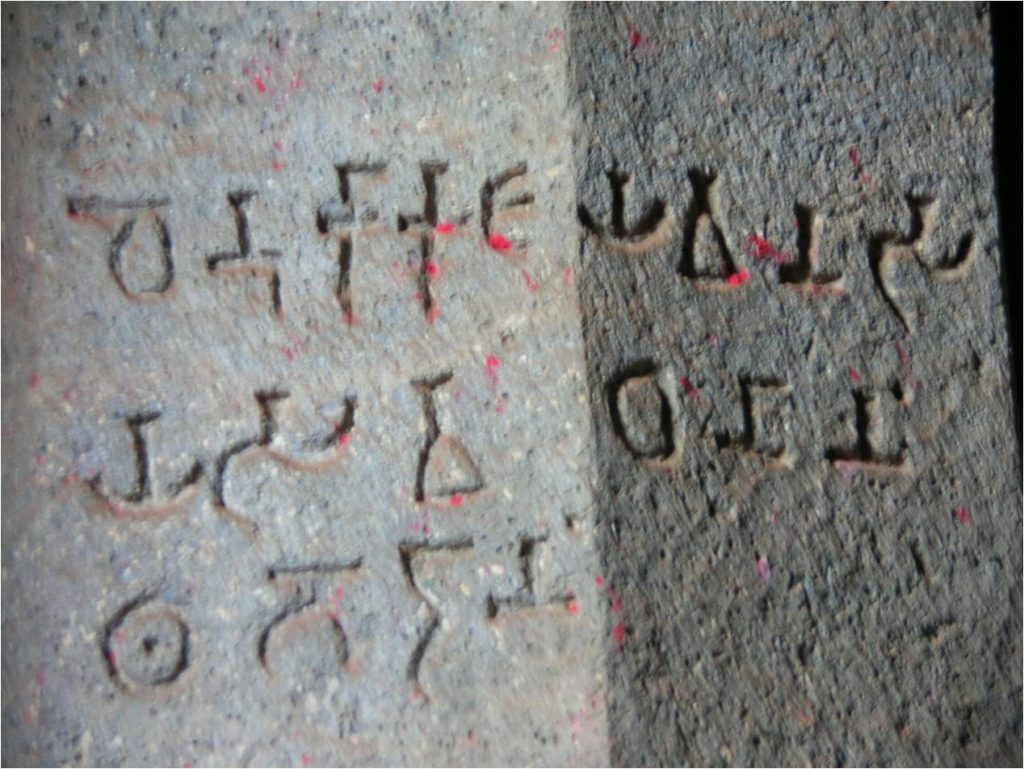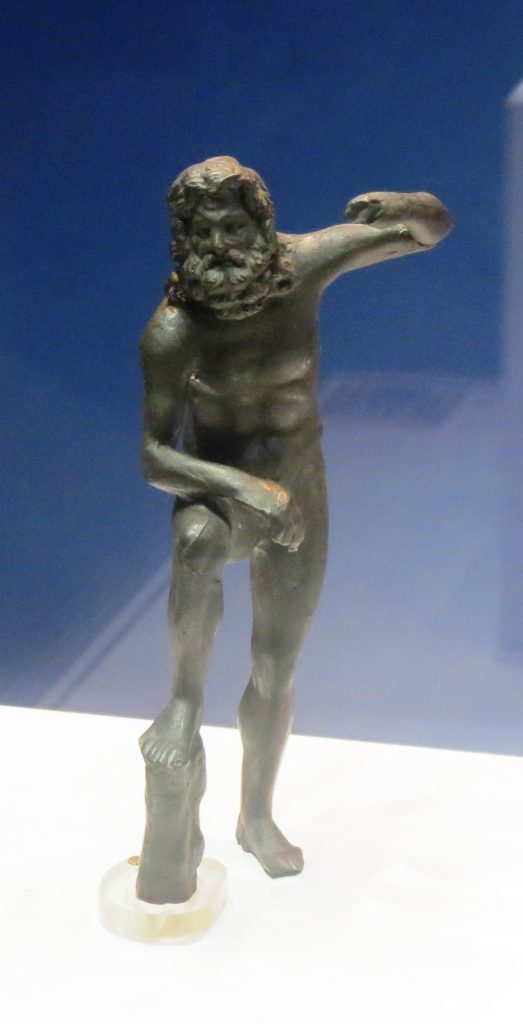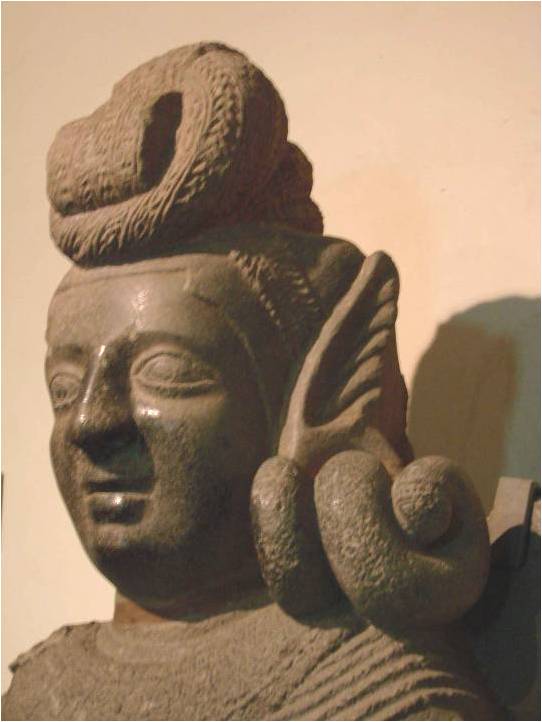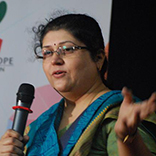‘Mastani’ was a ‘Yaavani’! This was the statement used for the famous lover of Peshwa Bajirao I. What did people in that era mean by the word ‘Yaavani’? It was not a community or caste in medieval India. However, the people of the contemporary period understood that Mastani was a Muslim woman. In the medieval times, Muslims were called Yavanas, and the Muslim women were called as Yaavanis, simply because they were following a religion of the foreigners. Traditionally, foreigners were known as Yavanas.
The antiquity
If one tries to see the antiquity of this word Yavana, its first textual occurrence is seen in Ashtadhyayi by Panini (5th century BCE), the famous text on grammar. There is a mention of Yavanani, which is interpreted as the Greek script. Panini was located in the North Western regions of modern Pakistan. He was probably aware of the script used by the people living in the then Persian territories, mainly the Greeks. The old Persian records use the word ‘yauna’ for the Lonian Greeks. These were the Greek people who resided on the islands of Lonia in Asia Minor. The Persian king Cyrus the Great had defeated them. Thus the Persians called the Greeks as Yauna.

Inscriptions in India can be found from the times of Ashoka, the famous Mauryan ruler and are dated back to the 3rd century BCE. The inscriptions of Ashoka provide a lot of information about the contemporary world. He even mentions the people and their kingdoms on the borders of his empire. His empire had spread far and wide in all the directions. In one of his inscriptions he mentions the community of the Yonas along with those of the Kambujas and Gandharas. He also mentions the names of his contemporary rulers in the western world to whom he had sent his missionaries for the spread of Buddhism. One of them was Yavanraja Antiyaka, i.e., Antiochus and four kings beyond Antiochus. Ashoka correctly gives the names of the four kings who were ruling in Europe at this time. In one of his edicts he says that Brahmanas and Shramanas (wandering monks) are found everywhere in his empire except the regions of Yonas and Kambojas. The Kandahar inscription was a bilingual inscription written in Greek and Aramaic (used in the Persian Empire), obviously for the Greek and Persian populations living in that region in those days. This clearly indicates that during the times of Ashoka there were considerable numbers of Greek and Persian people living in the regions known as Kambuja or Bactria, i.e., modern Afghanistan. This could have been the effect of the invasion of Alexander the Great and the rule of Seleucus Nicator in this region.
Ancient India, the welcome host
Ancient India was a peaceful amalgamation of people coming from many parts of the Old World. Many of these people came to India, and many have settled down here. Their references can be seen in literature, as well as in the inscriptions carved in various monuments where they gave munificent donations for the creation of those monuments or parts of them. The Buddhist literature also provides some important information about the people living in ancient India. Dipavamsa, the Buddhist chronicle from Sri Lanka mentions that after the Third Buddhist Council (which took place during Ashoka’s rule), the monk Maharakkhita was sent to the Yona country to spread the religion. It also mentions that Ashoka sent a monk Yona Dhammarakkhita to Aparant (North Konkan, i.e., today’s Mumbai, and surrounding region). All these references tell us that the Greeks were very much present in India, and some of them were influenced by Buddhism, and had even become monks to take up the work of a missionary.
After the disintegration of the Mauryan Empire, the Indo-Greek rulers from Bactria started ruling over the Gand- hara region, one of them was the famous king Milinda, i.e., Menander (2nd century BCE) of the Pali text Milinda Panha. He is referred as Yonaka in this particular text. Similarly, Heliodorus (2nd century BCE), an ambassador from Takshashila’s Indo Greek (Yavana) King Antialchidas to the court of the King Bhagabhadra, erected a Garuda stambha (pillar) in front of the temple of Vishnu at Vidisha in Madhya Pradesh. The inscription on the pillar gives the detailed background of Heliodorus and calls him as a Bhagavata (i.e., a devotee of Vishnu). It is interesting to note that the region from where Heliodorus came, i.e., the Gandhara region, was the stronghold of the Krishna and Balarama worship. It is not surprising to see that the coins of the Indo – Greek king Agathocles carried the images of Krishna and Balarama. These facts indicate a slow assimilation of the Yavanas into Indian society and their adoption of Indian religions.
A very strong evidence of the presence of the Yavana traders in western India comes from the inscriptions in the western Indian caves. The inscriptions at Nashik, Karla, Junnar, have preserved the details of the donations given by the Yavana traders to the Buddhist monasteries; most were written between 1st century BCE to 2nd century CE. A major chunk of this evidence comes from Karla. There are seventeen inscriptions on the pillars in the Chaitya hall at Karle, which mention that the donor had come from Dhenukataka. Out of these six are by the Yavana traders. No confirmed identification of this place has been done as yet, but many scholars propose that this was a colony of foreign traders. Scholars have proposed various identifications for this place which include Dharanikota in Andhra Pradesh, Devghar near Karla, Junnar, and recently Dahanu. There were many foreigners living in ancient India. However, while giving donations and recording them in the monu- ments, the foreign donors were very specific about mention- ing their respective ethnicities such as Yavana (Greeks), Shakas (Indo–Scythians), and Pahlavas (Indo- Parthians). These references are found in ample numbers at various places in western India. Many a times the Yavanas use their Indianised names, e.g., Yasavadhana (Yashavardhana), Sihadhaya (Sinhadhvaja), Dhammayavana, Chulayakha (Kshudrayaksha), Vitasamgata, Dharmadhvaja at Karle, Indragnidatta from Nashik, etc. Sometimes they had names which sounded different than the Indian names like Chita and Irila at Junnar.
This suggests the possibility that those Yavanas who had Indianised names, could be the second generation residents in the Indian territory. One example comes from the inscription in Cave No. 17 at Nashik. The donor is Yavana Indragnidatta. He was a resident of Dattamitri (somewhere) in North India. His father’s name was Dhammadeva and his son’s name was Dhammarakhita. There is a possibility that his father belonged to the Vedic tradition and hence his name was Indragnidatta (mentioning the names of the Vedic deities Indra and Agni). However, he himself could have had leanings towards Buddhism, and hence his son was named Dhammarakkhita, after the celebrated Yavana Dharmarakkhita who was sent to Aparanta by Ashoka.
The product of intermingling
This indicates that the Yavanas were staying in India for a long time. This had also resulted in the exchange and intermingling of the two cultures, visible mostly in the form of art and architecture that was produced in ancient India. Some concepts and motifs that were completely foreign to the Indian culture are seen in the monuments, e.g., the depiction of Sphinx at Nashik, Karle, Junnar (man-lion combination derived from the Egyptian Sphinx), Centaurs at Bhaja (man-bull combination of ancient Greek mythology), Griffins at Nashik (animal and bird combinations), owl at Nashik (an inauspicious bird for Indian culture, but very auspicious for the Greeks as it was the symbol of the Goddess Athena), guardian figures with ears like pixies or elves (at Pitalkhora and Kondane), suggesting their super human powers and ability to overpower calamity.

Triskelion at Nashik and Junnar (an ancient Celtic symbol, the antiquity of which goes back to 4,400 BCE, and since then occurring frequently in ancient European art and the specific meaning of which is still a riddle for the symbologists), etc. Such motifs are found in the western Indian caves like Pitalkhora, Nashik, Karle, Junnar etc.
All these motifs occur in Indian context only till around 2nd or 3rd century CE when the Yavanas were active in the Indian territories. These figures with the Greek origin probably acted as the protective auspicious symbols ward- ing the evil off from the monuments. Just as some traditional Indian auspicious motifs were used to protect the sacred monuments, some foreign symbols were also used for the same purpose. An interesting simile can be found in the modern world when people take help of both the Indian Vastushastra as well as the Chinese Feng Shui for their professional success and prosperity. The influx of the Yavanas India also brought some interesting objects belonging to their own cultural context. A very good example can be seen in the form of the small bronze image of Poseidon, the Greek sea god, found in the excavations at Brahmapuri in Kolhapur. Many other antiquities of conceptually Greek origin were found in this excavation. But this particular bronze image is testimony to the worship of the Greek sea god by some foreign devotee.
Eventually, the term Yavana was applied to any foreigner coming to India. The specific association of the Greeks with the term Yavana was forgotten and hence, later on, when the Muslims came to India, even they were called Yavanas. However, the study of the hoary antiquity of the Yavana presence in India would help to understand many more aspects of the ancient Indian social, economic and religious life in its real sense.


 [/column]
[/column]